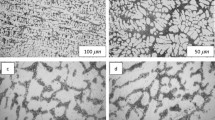Abstract
During the transition from Pb-containing solders to Pb-free solders, joints composed of a mixture of Sn-Pb and Sn-Ag-Cu often result from either mixed assemblies or rework. Comprehensive characterization of the mechanical behavior of these mixed solder alloys resulting in a deformationally complete constitutive description is necessary to predict failure of mixed alloy solder joints. Three alloys with 1 wt.%, 5 wt.%, and 20 wt.% Pb were selected so as to represent reasonable ranges of Pb contamination expected from different 63Sn-37Pb components mixed with Sn-3.0Ag-0.5Cu. Creep and displacement-controlled tests were performed on specially designed assemblies at temperatures of 25°C, 75°C, and 125°C using a double lap shear test setup that ensures a nearly homogeneous state of plastic strain at the joint interface. The observed changes in creep and tensile behavior with Pb additions were related to phase equilibria and microstructure differences observed through differential scanning calorimetric and scanning electron microscopic cross-sectional analysis. As Pb content increased, the steady-state creep strain rates increased, and primary creep decreased. Even 1 wt.% Pb addition was sufficient to induce substantially large creep strains relative to the Sn-3.0Ag-0.5Cu alloy. We describe rate-dependent constitutive models for Pb-contaminated Sn-Ag-Cu solder alloys, ranging from the traditional time-hardening creep model to the viscoplastic Anand model. We illustrate the utility of these constitutive models by examining the inelastic response of a chip-scale package (CSP) under thermomechanical loading through finite-element analysis. The models predict that, as Pb content increases, total inelastic dissipation decreases.
Similar content being viewed by others
References
R. Darveaux and K. Banerji, IEEE Trans. Comp. Hybrids Manuf. Technol. 15, 1013 (1992).
D. Bhate, D. Chan, G. Subbarayan, T.C. Chiu, V. Gupta, and D.R. Edwards, IEEE Trans. Compon. Packag. Technol. 31, 622 (2008).
K. Mysore, G. Subbarayan, V. Gupta, and R. Zhang, IEEE Trans. Electron. Packag. Manuf. 32, 221 (2009).
P. Towashiraporn, G. Subbarayan, and C. Desai, Int. J. Solid. Struct. 42, 4468 (2005).
L. Anand, J. Eng. Mater. Technol. 104, 12 (1982).
S.B. Brown, K.H. Kim, and L. Anand, Int. J. Plasticity 5, 95 (1989).
G.Z. Wang, Z.N. Cheng, K. Becker, and J. Wilde, J. Electron. Packag. 123, 247 (2001).
H.J. Frost and M.F. Ashby, Deformation-mechanism maps: the plasticity of creep and metals and ceramics (Oxford: Pergamon, 1982), pp. 1–16.
P. Limaye, R. Labie, B. Vandevelde, D. Vandepitte, and B. Verlinden, Proc. 9th Electron. Packag. Technol. Conf. (2007), p. 703.
Y. Zhang, C. Mitchell, J. Suhling, J. Evans, P. Lall, and M. Bozack, Proc. Surf. Mt. Technol. Int. Conf. (2009), p. 642.
Y. Zhang, K. Kurumaddali, J.C. Suhling, P. Lall, and M.J. Bozack, Proc. 59th Electron. Compon. Technol. Conf. (2009), p. 759.
Y.W. Yen, W.T. Chou, H.C. Chen, W.K. Liou, and C. Lee, Int. J. Mater. Res. 99, 1256 (2008).
T. Woodrow, Proc. Surf. Mt. Technol. Int. Conf. (2006), p. 24.
M.D. Abramoff, P.J. Magalhaes, and S.J. Ram, Biophotonics Int. 11, 36 (2004).
U.R. Kattner and C.A. Handwerker, Z. Metallkd. 92, 740 (2001).
U.R. Kattner, personal communication.
D. Swenson, J. Mater. Sci. Mater. Electron. 18, 39 (2007).
C.E. Ho, S.C. Yang, and C.R. Kao, J. Mater. Sci. Mater. Electron. 18, 155 (2006).
I. Dutta, P. Kumar, and G. Subbarayan, JOM 61, 29 (2009).
C. Basaran and J. Jiang, Mech. Mater. 34, 349 (2002).
N. Chawla, F. Ochoa, V.V. Ganesh, and X. Deng, J. Mater. Sci. Mater. Electron. 15, 385 (2004).
R. Sidhu, X. Deng, and N. Chawla, Metall. Mater. Trans. A 39, 349 (2008).
H. Song, J. Morris, and F. Hua, JOM 54, 30 (2002).
F. Garofalo, Fundamentals of Creep and Creep-Rupture in Metals (New York: Macmillan, 1965).
D. Hillman, T. Pearson, and R. Wilcoxon, Proc. Surf. Mt. Technol. Int. Conf. (2010).
T. Woodrow, Proc. Surf. Mt. Technol. Int. Conf. (2010).
D. Chan, D. Bhate, G. Subbarayan, and L. Nguyen ASME Conf. Proc. (2009), p. 199.
D. Chan, G. Subbarayan, and L. Nguyen, J. Electron. Mater., in press.
D. Bhate, K. Mysore, and G. Subbarayan, Mech. Adv. Mater. Str., in press.
Author information
Authors and Affiliations
Corresponding author
Additional information
An erratum to this article can be found at http://dx.doi.org/10.1007/s11664-012-1993-x.
Rights and permissions
About this article
Cite this article
Tucker, J., Chan, D., Subbarayan, G. et al. Constitutive Behavior of Mixed Sn-Pb/Sn-3.0Ag-0.5Cu Solder Alloys. J. Electron. Mater. 41, 596–610 (2012). https://doi.org/10.1007/s11664-011-1812-9
Received:
Accepted:
Published:
Issue Date:
DOI: https://doi.org/10.1007/s11664-011-1812-9




